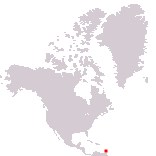Home > North America > Saint Vincent and the Grenadines

Saint Vincent and the Grenadines
Government type Parliamentary constitutional monarchy
Area 389 kmē (150 sq mi)
Population 110,000 inh. (2012 census)
Population 111,000 inh. (2024 est.)
Population density 285 inh/kmē (740 inh/miē)
Area 389 kmē (150 sq mi)
Population 110,000 inh. (2012 census)
Population 111,000 inh. (2024 est.)
Population density 285 inh/kmē (740 inh/miē)
Capital Kingstown (12,900 pop.)
Currency Eastern Caribbean dollar
Human development index 0.751 (89th place)
Languages English (official), Creole-English, Patois (Creole-French dialect)
Life expectancy M 70 years, F 75 years
Currency Eastern Caribbean dollar
Human development index 0.751 (89th place)
Languages English (official), Creole-English, Patois (Creole-French dialect)
Life expectancy M 70 years, F 75 years

Boundaries:
Surrounded by the Atlantic Ocean
GEOGRAPHY DATA OF SAINT VINCENT AND THE GRENADINES
Largest cities
Kingstown 12,900 pop.
Highest mountains
La Soufriere 1,234 m (4,049 ft)
Largest lakes
Crater Lake
Longest rivers
Colonarie
Largest islands
Saint Vincent 343 kmē (132 sq mi)
Bequia 17 kmē (6.6 sq mi)
Union Island 9 kmē (3.5 sq mi)
Canouan 7.6 kmē (2.9 sq mi)
Mustique 5.7 kmē (2.2 sq mi)
